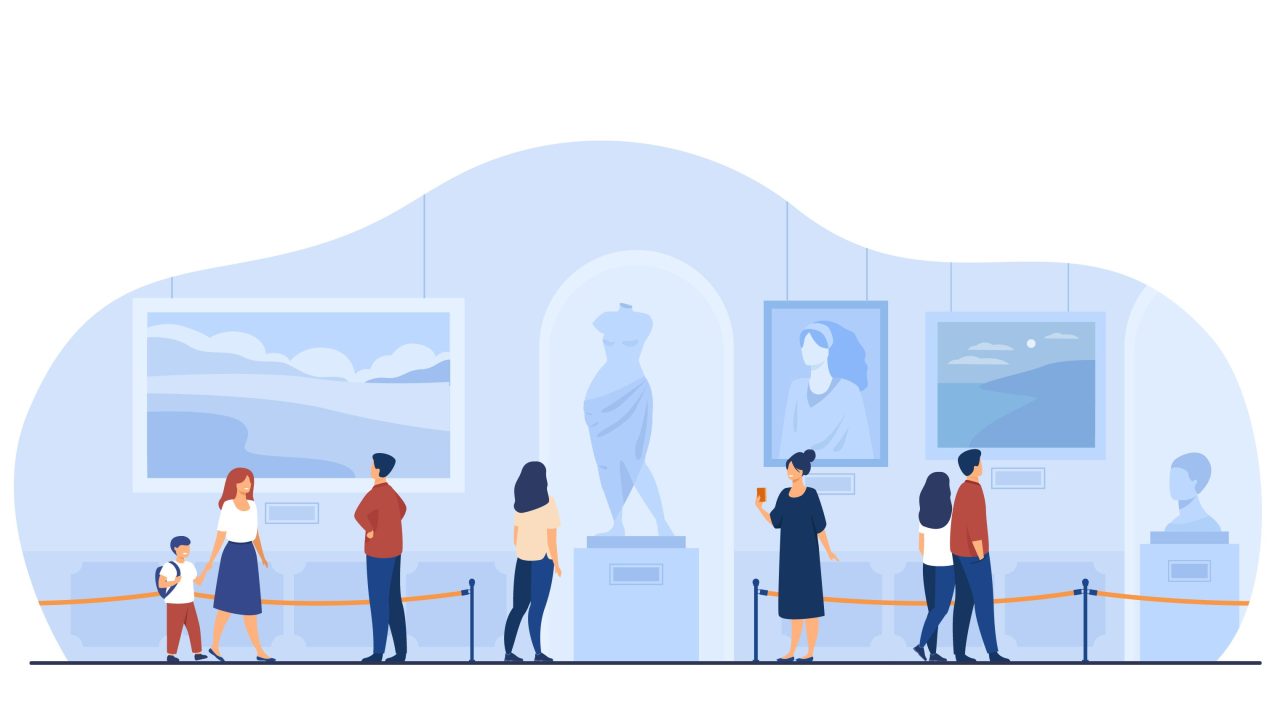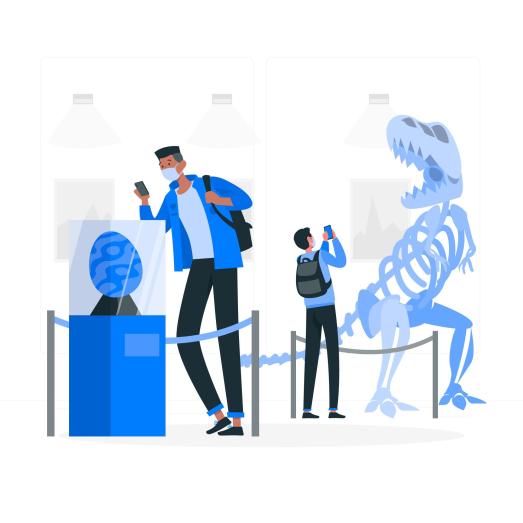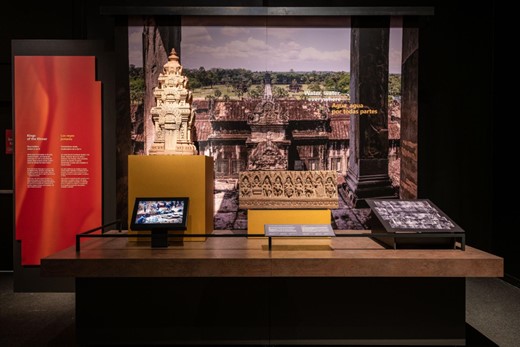
This post is an advertorial written by a company that serves the museum field. The views, opinions, and positions expressed by the authors and those providing comments are theirs alone and do not necessarily reflect the views, opinions, or positions of AAM or its employees.
Given that over 20 percent of the US population speaks a language other than English at home, how can you ensure that your museum is accessible to them? How do you engage your multilingual community and create meaningful educational experiences for them and their families?
It may seem like a daunting task, but it doesn’t have to be. Today, we’ll share expertise from our linguists on how to build inclusivity throughout the exhibit translation lifecycle.
Why translate exhibits to non-English languages?
Because of the growing percentage of people in the US who speak a foreign language at home (21 percent today vs. 11 percent in 1980), it’s clear that members of a museum’s local community will benefit from translated content.
In some of the largest US cities, the ratios are even larger: Chicago (36 percent), NYC (49 percent), and Los Angeles (59 percent). If a museum can translate content into the languages of its community, it tells them that they’re welcome and increases overall accessibility. There are other, more subtle benefits as well. Often these local non-English speakers are adults whose children are more fluent and comfortable in English. Having translated materials can empower the adults to lead and facilitate visits with their children. In addition, bilingual exhibits can be more engaging for bilingual speakers and language learners, who don’t exclusively interact with one language.
How to make decisions about the scope of exhibit translation
Choosing which exhibits to translate and into which languages can be difficult. Often museums have limited available resources and must focus on making the biggest impact. Some key considerations include:
- Community languages – A museum located in an area with a significant Spanish-speaking population, for example, may see the most value in choosing to translate exhibits into Spanish.
- Cultural appeal of the exhibit – The exhibit’s cultural audience may also play a role in the language decision. For example, an exhibit of jade carvings from China may appeal to Chinese-speaking visitors.
- Educational impact – Though ideally all exhibits would be translated, budgets may not allow it. In this case, choosing the most popular exhibits to translate can boost the educational impact for the most visitors.
In addition, museums should consider the depth of translation efforts for every exhibit. For museums facing limited resources, multilingual experiences may involve only the exhibit itself, such as labels, panel texts, and a general visitor guide.
For those with larger budgets, these efforts may also include audio guides, video voiceovers, interactive media, and QR code guides. Other materials may transcend the physical exhibit space as well, such as brochures, websites/apps, promotional texts, exhibition catalogs, focus groups, and more.
Finally, it’s important to note that some communities may expect you to produce dedicated content for them, not just translation of existing content. To build relationships with these groups, museums should also consider creating content that goes beyond the English source text.
6 best practices to align the translation with exhibit goals

Once the scope is defined for the exhibit translation, it’s essential to apply best practices to ensure your translated materials are meaningful. Numerous challenges may arise when translating museum content, including:
- Multiple translation options for the same English word
- Specialized terminology
- Space limitations in design
- Language without context
- Gender inclusivity in translation
Regardless of the challenges, achieving a valuable translation depends on close collaboration between the exhibition team and the linguists. Here are six best practices that can make this process run smoothly.
1. Include translation early in the exhibit creation timeline.
Ideally translation shouldn’t be an afterthought, but instead included in the exhibit creation process from the start. This way, the translator can align with the exhibit’s goals, the museum’s brand, and the overall design.
For example, Spanish reads about 15 to 30 percent longer than English, which means that panel texts may need to be designed to account for extra space. If translators are incorporated from day one, they can flag these issues in advance.
2. Give linguists spatial context for the exhibit text.
Exhibits are inherently visual in nature, and mistranslations often occur when linguists don’t know what an object looks like or where the text will be located around the exhibit. In particular, copy that explains details of an object can be tough to translate without visual cues.
The spatial pathway of the exhibit can also impact the translation. In the case of audio guides, for example, it’s key that translators understand the map of the exhibit and how visitors will be moving through the space.
3. Collaboratively consider language challenges with the exhibit curator.
Translators should never be siloed from the larger exhibit team. Give linguists access to curators and project managers so they can get a deep understanding of the exhibit.
It’s common for exhibits to use specialized language or include interactives that require reimagining the text completely. For example, when Multilingual Connections worked with MuseumsPartner to adapt the exhibit Angkor: the Lost Empire of Cambodia for the California Science Center’s Spanish-speaking audiences, it was essential to work closely with the curators in order to translate the exhibit’s interactive games.

In one game, visitors had to correctly order “broken” phrases on ancient tablets into “inscriptions” that made sense. Our translators received visuals and instructions from the exhibit team to ensure the Spanish translation would work when broken up and reordered—just like the English version.
4. Communicate frequently during the exhibit creation process.
Ongoing communication is crucial for obtaining end results that ensure audience engagement. It allows translators to respond to challenges, ask questions, get early feedback, and iterate texts as needed.
Close communication also ensures that egregious errors aren’t made in the target translation. For example, a museum that aims to build a closer relationship with local Spanish-speaking visitors should ensure that the exhibit translation is rendered in the most common local dialect—and not, for instance, Spanish from Spain, which uses very distinct verbs and expressions as compared to the Spanish spoken in the US.
5. Perform a comparative reading before the exhibit launch.
Another best practice towards the end of the translation process is to do a professional comparative reading. This should be performed by a separate linguist, who checks whether texts in both languages are creating similar exhibit experiences. A comparative reading also ensures that the quality of the translation is the very best possible.
6. Choose your translation agency wisely.
Finally, exhibit translation is an impossible task without the right language partner. It’s essential to choose a partner who specializes in culturally nuanced translation and can bring a wealth of experience to meet your exhibit goals. Though museum budgets are often limited, you should always choose professional language solution services to ensure high-quality exhibit translation.
Build inclusivity with multilingual museum exhibits
Since 2005, Multilingual Connections has supported museums and cultural institutions across the US to better understand, engage, and grow their diverse multilingual audience through culturally nuanced translation for museums and cultural institutions.
We’ve seen firsthand the importance of translating exhibits by working on integrated teams that share key context clues and align with museum goals. As you build inclusivity at your museum, be sure to follow these best practices to achieve the greatest impact with your exhibit translation.
About Multilingual Connections
Founded in 2005, Multilingual Connections provides culturally nuanced translation, transcription, transcreation, multimedia localization, and multilingual moderation services to help clients understand, engage, and grow their multilingual audiences. For museums and cultural institutions, Multilingual Connections provides numerous solutions, including exhibit translation, audio transcription for video footage, subtitling for documentaries and educational videos, and voiceover for audio tours. Certifications include WBENC, WBE, WOSB, EDWOSB and DBE; Multilingual Connections is also a proud member of AAM, the American Translators Association (ATA), the Association of Language Companies (ALC), and the Globalization & Localization Association (GALA). We’d love to connect!
Phone: +1 877-292-5264







